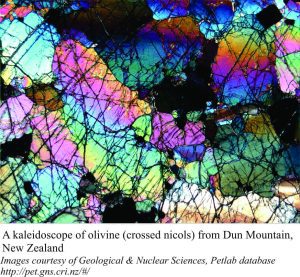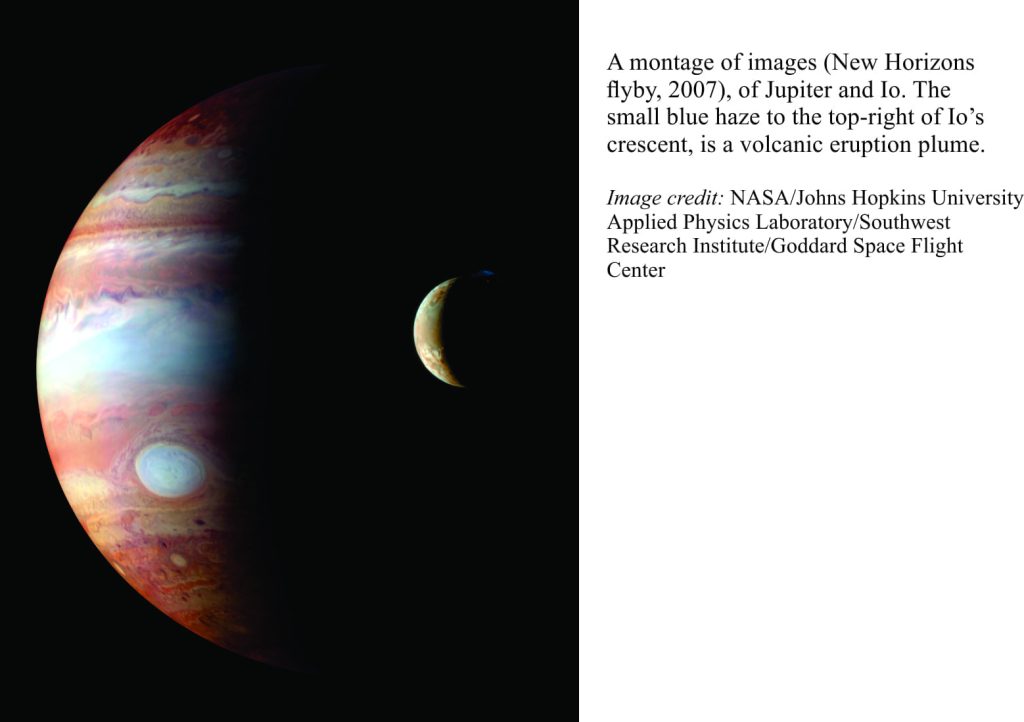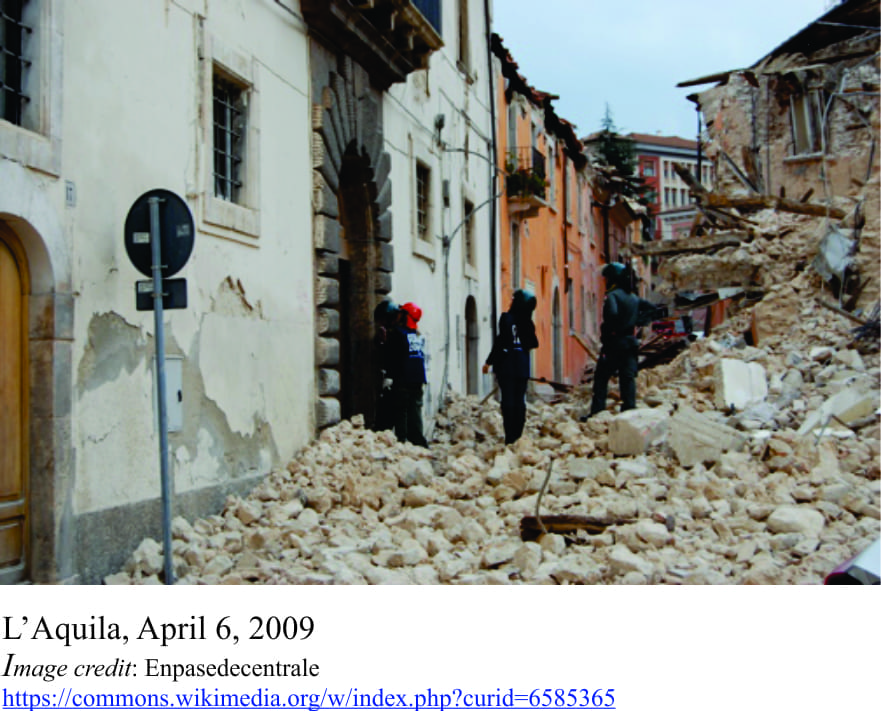Zeus, the head-honcho of assorted Greek gods, heroes, nymphs, and mortals, was chiefly the God of the Sky, or Heavens. One of his minor portfolios was the upholding of Honour, but as mythology relates, he didn’t put much energy into that particular task; he was a philanderer, much to the annoyance of his own wife, Hera (I guess his energies were directed elsewhere). One such misdirection was Io, a mortal woman, who had the misfortune to be turned into a heifer by Zeus, to hide the infidelity from Hera. Io’s memory now survives as a planetary body; one of the Galilean moons of Jupiter is named after her (to be named a moon of the Roman God Jupiter, seems like a historical slap in the face to the Greek deity). Continue reading
Monthly Archives: August 2017
An Italian job; seismic risk-assessment at risk
Life is a risky business. Not a day goes by when some aspect of our lives comes under the gaze of risk assessment, an analysis of potential adversity, the probability that some event will impact our well-being. No black and white determinism here; we have become probabilistic entities. The seemingly simple act of driving your car, is translated into an actuarial assessment that determines the cost of insurance, a government’s health budget, a funeral director’s business plan, or a vehicle manufacturer’s liability. All are predicated on the probability of some event taking place – one chance in x occurrences. No luck, or absence of luck? Luck is when you win the lottery without buying a ticket.
Predicting natural phenomena, like volcanic eruptions, tornadoes, or earthquakes, is the stuff of science. The problem with these kinds of events is that they can have global impacts. How does Continue reading
Life on Mars; what are we searching for?
I believe alien life is quite common in the universe, although intelligent life is less so. Some say it has yet to appear on planet Earth. Stephen Hawking
I can only imagine H.G. Wells bitter disappointment if he were to learn that Martians were little more than primitive microbes. All that hype and scare-mongering for nothing. Because that, it seems, is all we are ever likely to find on Mars. They may be intelligent microbes, but microbes nonetheless.
Present conditions on Mars are not conducive to thriving populations of anything living – at least in any life form we are familiar with. Incident UV and other solar radiation, low atmospheric pressure, an atmosphere almost devoid of oxygen, and the presence in soils of oxidizing molecular compounds such as perchlorates and hydrogen peroxide (think bleached hair), all contribute to rather inclement living conditions. It is possible that some life forms have survived these ravages, in sheltered enclaves or buried beneath the scorched earth, but it is more likely that, if life did exist on Mars, we will find the evidence written into ancient sedimentary rocks, or perhaps as chemical signatures. It is these attributes that current exploration programs, both landed rover expeditions and orbiting satellites, tend to focus on. Continue reading
Sliced thin; an unfolding story of sandstone
What do you think of this analogy; sandstone, and a pile of garbage? I jest, of course. Garbage is no laughing matter – it has become a defining environmental issue of global import. Sandstones too are not to be sneered at.
Your pile of refuse will consist of the flotsam and jetsam of a lifestyle – things you no longer need or want, things acquired over time from any number of localities, some of which may be very far away. Garbage anthropology is a thing. Enlightened folk examine piles of old rubbish because they provide data that allows them to decipher lifestyles and cultural norms.
Sandstone is a sedimentary rock made up of a collection of grains; these too accumulated over time and could have been derived from sources close by or very far afield. Grains of sand Continue reading
Sliced thin; time and process recorded in igneous rocks
This is the second in a series on the geological world under a microscope

Geologists, it seems, are never satisfied with just looking at rocks from a distance; there is some innate need to wield their pointy geological hammer. Break that rock; give it a good bash! To the uninitiated, this may seem a bit pugilistic, a kind of primal wonton destruction. But a good geo won’t hit rocks just for the hell-of it; a good Geo will be selective. Most of my field assistants and post-graduate candidates needed to be reminded of this. Find something of interest? Before you do anything else, sketch and photograph it; no one will be interested in looking at photos of rubble.
Looking ‘inside’ rocks serves a unique purpose; it allows you to travel back in time, to picture the ancient world, ancient events, outcomes of processes that involve the benign and the brutal, terrifyingly beautiful. Rocks contain memories of all these. And that is why we sometimes break them apart. The optical, or polarizing microscope allows us to unlock these rock memories in a uniquely visual way. Continue reading




